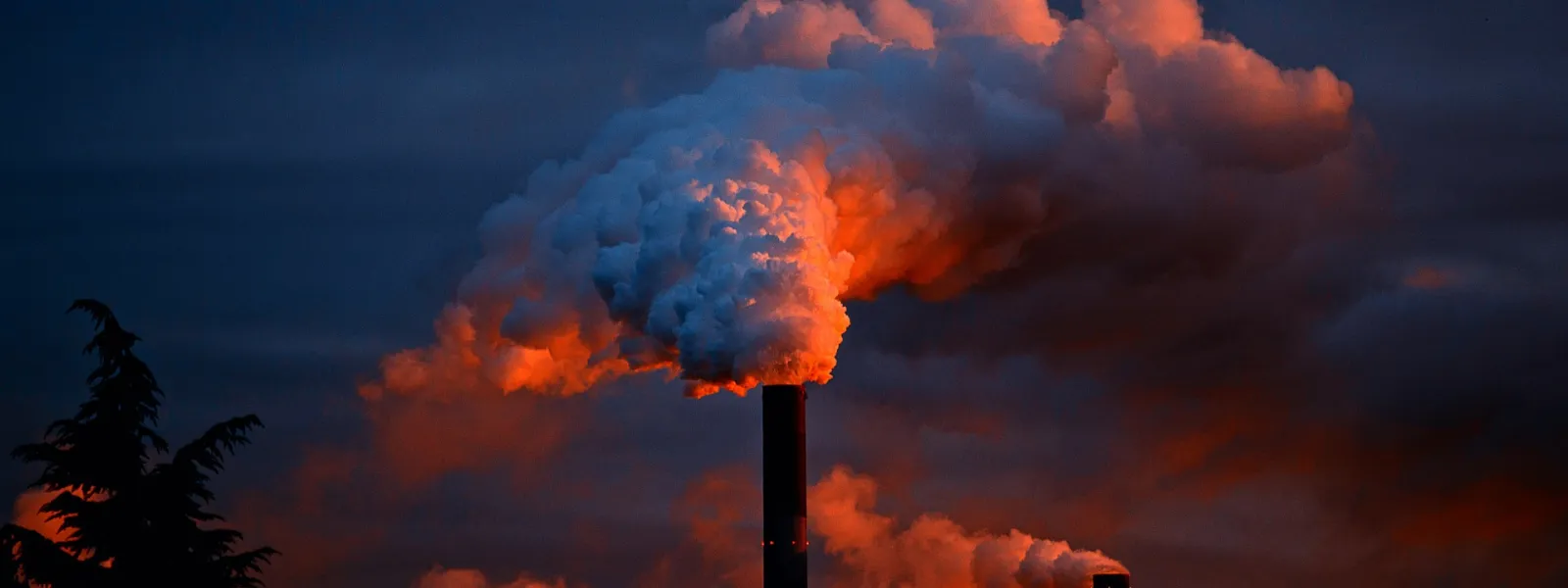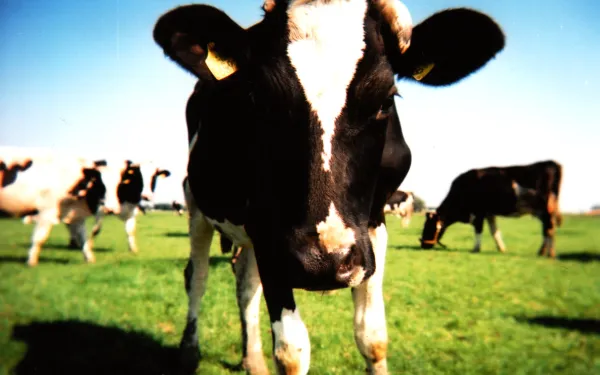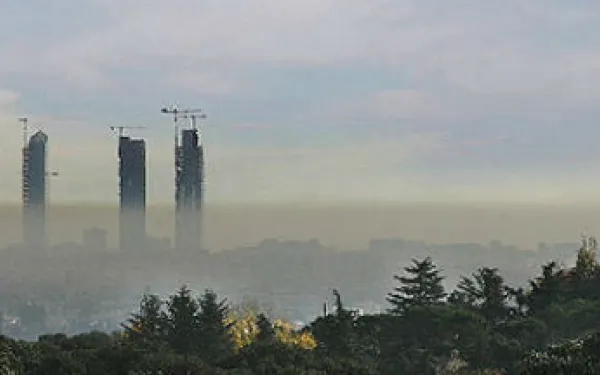
Project
Combating Short-Lived Climate Pollutants (SLCPs)
You encounter them every day: soot from auto exhaust and burning wood (black carbon), gases that make refrigerators and air conditioners cool (hydrofluorocarbons), natural gas that makes your stove work (methane), and ground-level ozone formed by sunlight and fossil-fuel emissions. Short-live climate pollutants are all around us. And controlling them holds great potential in the fight against climate change.
Short-lived climate pollutants (SLCPs) are so named because they last a relatively short time in the atmosphere, from a few days to a few decades. In contrast, carbon dioxide (CO2) can last centuries. Yet they’re a major contributor to climate change, degrade air quality, and have grave impacts on food security and the health of the world’s most vulnerable populations.
According to the Intergovernmental Panel on Climate Change, SLCPs are responsible for more than 30 percent of global warming (more recent studies estimate their contribute to be as high as 45 percent).
Effective control of SLCPs could create significant progress in the near-term fight against climate change, buying time to implement long-term solutions. It could also mean better air quality, a reduction in premature deaths from respiratory and heart disease, and improved crop yields.
Related projects
Latest News

Controlling Short-Lived Climate Pollutants: An opportunity to better air quality and mitigate climate change
The report review the institutional, legislative, and regulatory frameworks, as well as existing government programs related to the control and monitoring of SLCPs, in three strategic countries of Latin America: Brazil, Chile and Mexico. Short-lived climate pollutants (SLCPs) are atmospheric agents that contribute to climate change and degrade air quality. They are so-named because of their relatively short lifespan in the atmosphere, ranging from a few days to a few decades. SLCPs include: black carbon, methane, tropospheric ozone, and hydrofluorocarbons. This report identifies areas of opportunity and potential gaps in which each of the three countries can make progress in mitigating these pollutants. Addressing these opportunities will benefit the fight against climate change, as well as the protection of ecosystems and human health. The report was made by the Interamerican Association for Environmental Defense (AIDA), in collaboration with the Instituto de Energia e Meio Ambiente (IEMA), and with the participation of the Centro de Derechos Humanos y Ambiente (CEDHA) of Argentina, and the Centro Mexicano de Derecho Ambiental (CEMDA), as well as the Red Latinoamericana de Contaminantes Climáticos de Corta Vida (RedRacc). Special thanks to Romina Picolotti of the Centro de Derechos Humanos y Ambiente (CEDHA); Laura Gallardo and Nicolás Huneeus of the Centro del Clima y Resiliencia de la Universidad de Chile; Gianni López of the Centro Mario Molina Chile; Gabriela Niño and Giselle García of the Centro Mexicano de Derecho Ambiental (CEMDA); Erika Rosenthal of Earthjustice; Sandra Guzmán of the Grupo de Financiamiento Climático para América Latina y el Caribe (GFLAC); Stela Herschmann of the Institute for Governance & Sustainable Development (IGSD); Evangelina Vormitagg of the Instituto Saúde e Sustentabilidade de Brasil; Marcelo Mena of the Ministerio de Medio Ambiente of Chile; Flavia Liberona and Javiera Valencia of the Fundación TERRAM of Chile; Luis Cifuentes of the Universidad Católica de Chile; Maria de Fatima Andrade and Paulo Hilário Nascimento Saldiva of the Universidad de São Paulo; and Sebastián Tolvett of the Universidad Técnico Metropolitana de Chile, for their comments and support. Read and download the report (in Spanish) Read and download the executive summart (available in English)
Read more
Reducing Short-Lived Climate Pollutants: A life jacket in times of climate change
By Florencia Ortuzar, AIDA attorney They’re all around you – the air conditioner hanging from your neighbor’s window, the charcoal powering your grill, the black smoke pillowing out of a passing truck, even the cows dotting the fields outside town. These familiar aspects of our daily lives are just some of the sources of short-lived climate pollutants (SLCPs). When released, SLCPs warm our atmosphere. But, compared to carbon dioxide, they have a relatively short lifespan. Consequently, their effective mitigation could provide a life jacket on the troubled waters of climate change. That’s why SCLPs are worth considering as the world moves rapidly toward the new global climate accord to be signed at the 21st Conference of Parties (COP21) of the United Nations Framework Convention on Climate Change (UNFCCC). The meeting in Paris this December will be the most important in the global climate negotiations thus far. The new accord it produces could help us out of the planetary dilemma we’re currently in. The task is difficult. There have been 20 conferences of the UNFCCC so far, none of which has made substantial progress. Emissions have increased each year since the convention began, except for 2008 and 2009, when they decreased due the global economic crisis (not, notably, due to human will to survive). Sometimes, it’s hard to keep hope alive, but at AIDA, we never lose it. What are SLCPs? These contaminants include black carbon, tropospheric ozone, methane and hydroflourocarbons (HFC). Each one of them is different, but they share two main characteristics: they are major contributors to global warming, and, once emitted, they remain in the atmosphere briefly. The second feature is the one to which we must draw attention if we seek to mitigate climate change in the short term. Unlike SLCPs, carbon dioxide (CO2) can remain in the air for centuries. That means that even if we stopped all emissions today, the CO2 emitted would continue to warm the atmosphere for a very long time. How big of a problem are they? The Intergovernmental Panel on Climate Change (IPCC) has estimated that SLCPs are responsible for more than 30 percent of global warming. More recent studies estimate between 40 and 45 percent. Mitigating carbon dioxide, responsible for the majority of the greenhouse effect, is essential to maintaining the climatic equilibrium of the earth in the long term. But the opportunity offered through the mitigation of SLCPs is much more immediate, and its effects could be felt in our daily lives. Advantages of reducing SLCPs The desirability of reducing SLCPs is much greater if we consider that, in addition to heating the atmosphere, these contaminants cause other problems that directly affect human health and the natural environment. Black carbon and tropospheric ozone, for example, are the cause of millions of premature deaths each year, since they increase the risk of respiratory and heart disease. They also damage crop yields, so their control would help improve food security worldwide. What does the Convention say? The Convention and its Kyoto Protocol do not recognize SLCPs as a concept, although the Protocol does include methane and HFCs in the greenhouse gases it seeks to combat. But this lack of recognition may change with the new climate accord. The current agreement includes a list of specific polluting gases that States must reduce. With the new agreement, however, countries will be free to decide what to include in their gas mitigation targets. Mexico has become a notable example in this regard by unconditionally committing, through its Intended Nationally Determined Contributions (INDCs), to reduce black carbon by 51 percent by 2030. This percentage has the potential to rise to 70 percent with international assistance. The work at hand At AIDA we work to inform governments of the measures they could take to effectively reduce short-lived climate pollutants in their countries. We advocate for the adoption of solutions whose effectiveness has already been tested in various parts of the world. We are preparing a report that reviews current regulation of these pollutants in three Latin American countries: Brazil, Chile and Mexico. We hope this report will facilitate progress towards a better approach to SLCPs in these countries. We will then continue working on this important issue in the rest of the region. You can find more information about SLCPs HERE!
Read more
Short-Lived Climate Pollutants: A great opportunity to put the brakes on climate change
By Florencia Ortuzar, legal advisor, AIDA While many of us are alarmed by climate change and its already tangible effects, concern becomes even greater when learning the fact that all the CO2 accumulated in the atmosphere cannot be removed, even if we were to shut down all the sources of emissions today. This reality was confirmed in the Fifth Assessment Report on the state of the climate, issued by the Intergovernmental Panel on Climate Change (IPCC). The explanation for this is simple: CO2, in contrast to other gases and pollutants, remains in the atmosphere for millennia after being released. It is stuck in the atmosphere for what is eternal for human standards, implying that its greenhouse effect does not end even with an immediate halt in emissions. The good news is that CO2 is not the only cause of global warming. There are other pollutants that, unlike CO2, only stay in the atmosphere for a relatively short time. These “other” agents are responsible for 40-45% of global warming, and they remain in the atmosphere for a minimum of a few hours to a maximum of a few decades. They are called short-lived climate pollutants, or SLCPs. Like CO2, SLCP emissions have a negative impact on humans and ecosystems. So a reduction in these pollutants would bring immediate relief to the worst affected by climate change and would bring important benefits to the environment and people. The main SLCPs Although all SLCPs contribute significantly to climate change and share the trait of being short-lived, each has its unique characteristics and emission sources. Black carbon or soot, is a particulate substance produced by the incomplete combustion of fossil fuels, mainly from motor vehicles, domestic stoves, fires and factories. The dark particles heat the atmosphere as they absorb light, and when the particles land on snow and ice they accelerate melting. Black carbon also affects human health by causing respiratory problems such as lung cancer and asthma. Tropospheric ozone is a gas formed by the reaction of the sun with other gases called "precursors," which can be man made or naturally occurring. One of these precursors is methane, another SLCP. Tropospheric ozone is associated with diseases including bronchitis, emphysema, asthma and permanent scarring of the lung tissue. Studies also show that this gas has a direct impact on vegetation, reducing crop yields and the ability of plants to absorb CO2. Methane is a powerful greenhouse gas, and 60% of its emissions come from human activities like rice farming, coal mining, landfill and oil combustion. Two important sources of methane include cattle farming, whose effect has dangerously increased with industrial meat production (Spanish), and large dams, especially those in tropical areas. Hydrofluorocarbons (HFCs) are man-made gases used in the production of air conditioners, refrigerators and aerosols. They have replaced chlorofluorocarbons (CFCs), which were banned under the Montreal Protocol. Although HFCs represent a small proportion of the greenhouse gases emitted into the atmosphere, their use is growing at an alarming speed of an average of 10-15% each year, according to a United Nations Environment Programme (UNEP) report. Everyone wins According to the IPCC, the reduction of these pollutants could avert a rise in average global temperatures by approximately 0.5 degrees Celsius by 2050, cutting the current rate of global warming in half and helping to protect some of the areas most susceptible to climate change like the Arctic, the high Himalayan regions and Tibet. The mitigation of SLCPs is also crucial for decelerating glacial melting and rising sea levels, a serious situation for the world’s population that lives in coastal areas. The reduction of SLCPs would also bring important socio-environmental benefits. Black carbon and tropospheric ozone harm human health and reduce crop yields. This in turn affects ecosystems, food security, human welfare and the entire natural cycle that keeps the planet healthy. Some talking points Given that SLCPs stem from different sources, effective mitigation requires a series of comprehensive actions that deal with each pollutant separately. Fortunately, the road is already laid out. Many of the technologies, laws and institutions needed to cut SLCP emissions already exist. In the case of black carbon, new technologies are inexpensive and available. Developed countries have already reduced emissions significantly through the use of green technologies. Ideas include the modernization of domestic cooking systems in the region, introducing the use of solar cookers and new transport systems with improved exhaust filters to reduce greenhouse gas emissions. The amount of methane in the atmosphere, which affects the level of tropospheric ozone, is largely dependent on industrial activities. To reduce emissions, effective regulations should be implemented to control the industries that emit the most methane, including intensive cattle farming, mining, hydrocarbons and large dams. For HFCs, an alternative already exists. There need to be regulations that encourage people to substitute HFCs for greener alternatives, no matter the commercial barriers. Some countries have proposed incorporating HFCs in the Montreal Protocol, an international agreement recognized as one of the most successful initiatives to significantly and rapidly reduce CFC emissions, addressing a similar challenge, to the one we face today. To find out more about SLCPs, you can read a briefing paper (Spanish) put together by AIDA, CEDHA, CEMDA and RedRacc.
Read more